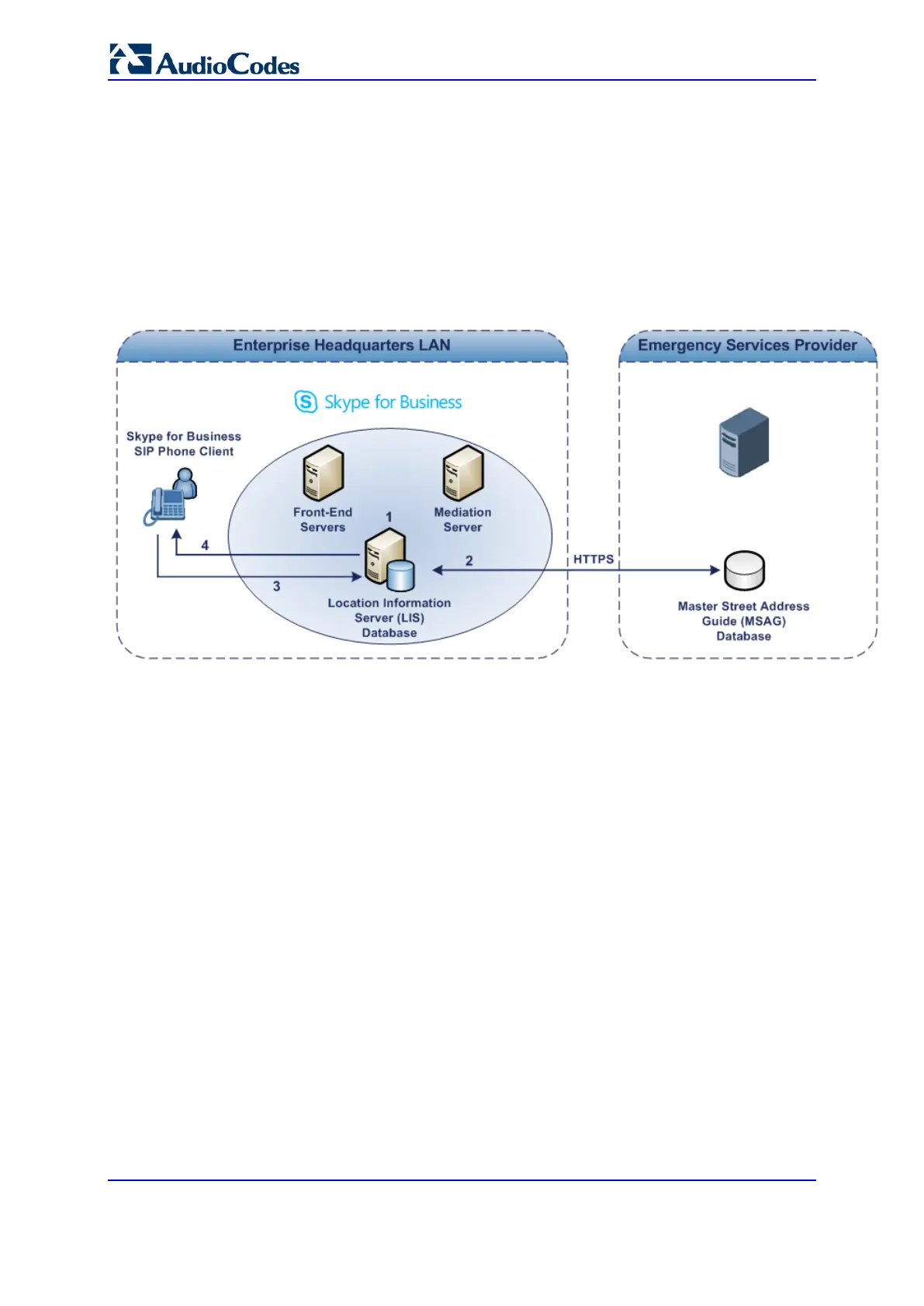User's Manual 282 Document #: LTRT-27045
Mediant 1000B Gateway & E-SBC
the location of each network element in the enterprise. Immediately after the Skype for
Business client registration process or when the operating system detects a network
connection change, each Skype for Business client submits a request to the LIS for a
location. If the LIS is able to resolve a location address for the client request, it returns the
address in a location response. Each client then caches this information. When the Skype
for Business client dials 9-1-1, this location information is then included as part of the
emergency call and used by the emergency service provider to route the call to the correct
PSAP.
The gathering of location information in the Skype for Business network is illustrated in the
figure below:
Figure 15-52: Microsoft Skype for Business Client Acquiring Location Information
1. The Administrator provisions the LIS database with the location of each network
element in the Enterprise. The location is a civic address, which can include
contextual in-building and company information. In other words, it associates a
specific network entity (for example, a WAP) with a physical location in the Enterprise
(for example, Floor 2, Wing A, and the Enterprise's street address). For more
information on populating the LIS database, see ''Adding ELINs to the Location
Information Server'' on page 283.
2. The Administrator validates addresses with the emergency service provider's MSAG –
a companion database to the ALI database. This ensures that the civic address is
valid as an official address (e.g., correct address spelling).
3. The Skype for Business client initiates a location request to the LIS under the following
circumstances:
• Immediately after startup and registering the user with Skype for Business
• Approximately every four hours after initial registration
• Whenever a network connection change is detected (such as roaming to a new
WAP)
The Skype for Business client includes in its location request the following known
network connectivity information:
• Always included:
♦ IPv4 subnet
♦ Media Access Control (MAC) address
• Depends on network connectivity:
♦ Wireless access point (WAP) Basic Service Set Identifier (BSSID)

